Belarus Tour Guide: Ideas for Your Trip!
What to see in Lida: Grand Duke Hiedymin’s castle, King Jahajla’s wedding, old brewery and open air festival
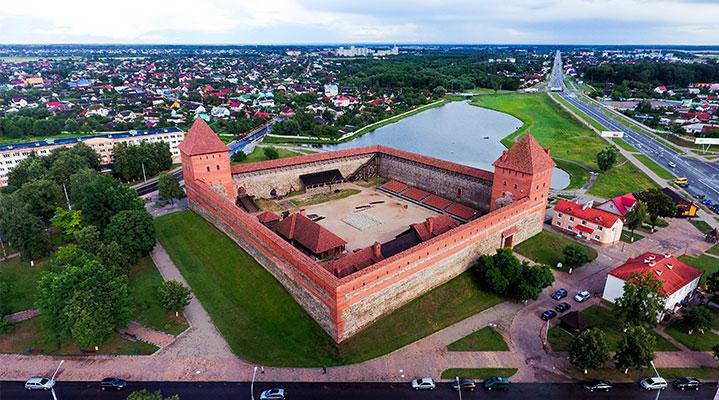
The town of Lida, the name reminiscent of a beautiful female name, has recently turned 697. Lida was first mentioned in chronicles in 1323 but historians believe that it is much older. At the beginning of the 14th century, Duke Hiedymin, the founder of the famous dynasty of rulers of the Grand Duchy of Lithuania, founded a castle on a hill, at the confluence of the rivers Lidia and the now almost extinct Kamenka. Its formidable walls protected the townspeople from frequent raids of Tatars and Teutonic knights.
Despite the romantic version, the town derives its name not from the beautiful female name but from the Baltic words lydimas or lyda - ‘logging’, ‘a cut-over area’. In 2020, Lida was named Belarus’ Capital of Culture. As part of this large-scale project the town showed its new facets, even despite the COVID-19 restrictions. In November 2019 Lida became part of the visa-free zone for citizens of more than 70 states who can stay in the town without visas for 15 days.
No doubt, the unique town offers a treasure trove of cultural delights. Architectural attractions, the unique atmosphere of the Middle Ages, entertainments from the times of knights and ladies, old brewing traditions and a spectacular open-air festival. This is something Lida is loved for by Belarusians and travelers from other countries.
Lida Castle
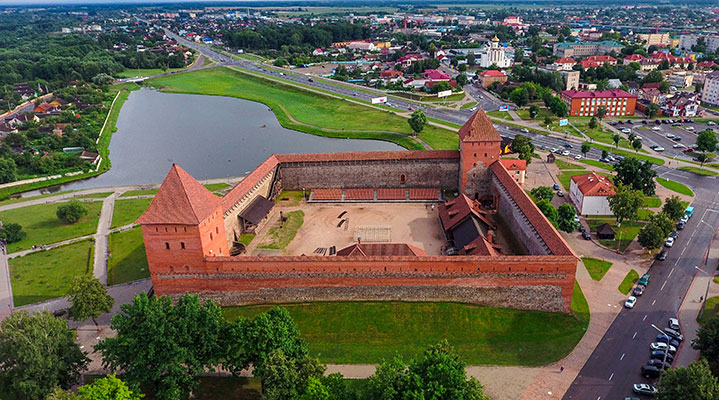 Lida’s most cherished heritage is the castle laid in 1323 by Grand Duke Hiedymin, the forefather of the legendary dynasty and the founder of Vilna, the capital of the Grand Duchy of Lithuania. The Lida bastion is rightly considered unique because it was the first stone castle of the Grand Duchy of Lithuania in Belarus. It also served as a prototype of another famous castle, which was built later in the town of Mir by Duke Yuri Ilyinich, the governor of Lida. Unlike Mir Castle, Lida Castle is very ascetic: blank walls with small windows were designed primarily to defend the town from the enemy.
Lida’s most cherished heritage is the castle laid in 1323 by Grand Duke Hiedymin, the forefather of the legendary dynasty and the founder of Vilna, the capital of the Grand Duchy of Lithuania. The Lida bastion is rightly considered unique because it was the first stone castle of the Grand Duchy of Lithuania in Belarus. It also served as a prototype of another famous castle, which was built later in the town of Mir by Duke Yuri Ilyinich, the governor of Lida. Unlike Mir Castle, Lida Castle is very ascetic: blank walls with small windows were designed primarily to defend the town from the enemy.
Over its history Lida Castle experienced numerous sieges, assaults, destruction during wars. After the fire of 1891, when almost the entire center of Lida burned down, the authorities allowed locals to dismantle the castle buildings to rebuild the town. The southwestern tower and part of the western wall were dissembled almost completely then.
In the early 20th century, a minor restoration project was carried out in the castle. In summer, the courtyard of the castle offered its premises for tent circuses or menageries; in winter a Christmas tree was set up and a skating rink was arranged there. In 1953 Lida Castle was taken under state protection, but, unfortunately, this did not save it from destruction. In 1983 the building was completely mothballed.
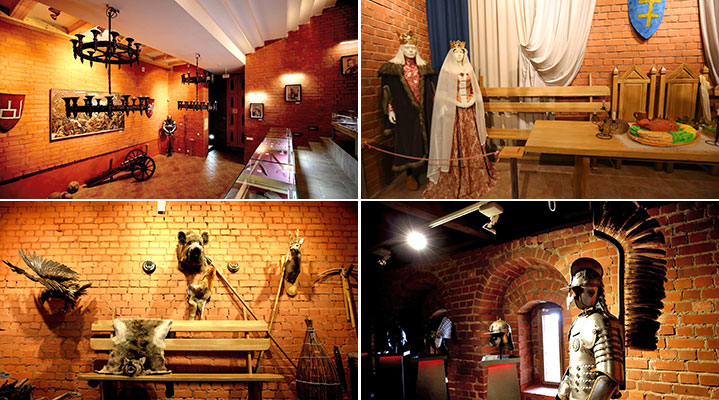 It was not until Belarus became independent that Lida Castle started to regain its former splendor. The lost fragments of the fortress walls were restored, the towers were reconstructed. In 2017 the Vitaut Tower was unveiled; now it houses an exhibition of rare artifacts. In 2020 the gate of the Hiedymin Tower opened after a major refurbishment project. Interestingly, there are no barriers there like in other museums - on the contrary, tourists are allowed to touch the exhibits, you can even sit on the furniture on display. Visitors to Lida Castle can feel like a medieval prince or a beautiful lady as they take part in interactive theatrical excursions and programs, knightly tournaments, concerts and fire shows.
It was not until Belarus became independent that Lida Castle started to regain its former splendor. The lost fragments of the fortress walls were restored, the towers were reconstructed. In 2017 the Vitaut Tower was unveiled; now it houses an exhibition of rare artifacts. In 2020 the gate of the Hiedymin Tower opened after a major refurbishment project. Interestingly, there are no barriers there like in other museums - on the contrary, tourists are allowed to touch the exhibits, you can even sit on the furniture on display. Visitors to Lida Castle can feel like a medieval prince or a beautiful lady as they take part in interactive theatrical excursions and programs, knightly tournaments, concerts and fire shows.
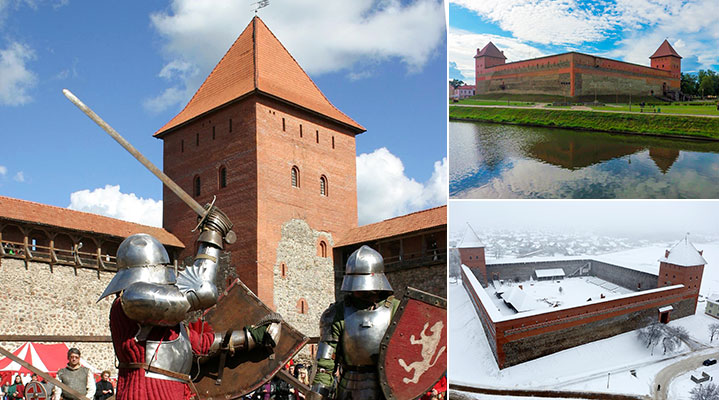 The most famous theatrical performance of the castle re-enacts the 15th century-wedding of a young beauty Sophia of Halshany and King Jahajla. ... The 73-year-old Jahajla had been married three times but had no sons. When he was visiting the Prince of Drutsk, Andrei Halshany’s daughters Vasilisa and Sophia caught his eye. The king wanted to marry the younger Sophia “from the Lithuanian clan” hoping that “God will have mercy” and would help him produce an heir. Thus, after brief negotiations in Novogrudok, the king married the 16-year-old princess. The wedding was celebrated in Novogrudok for several days. On their way to Krakow for the coronation, the couple stopped at Lida Castle ... Years later, Queen Sophia gave birth to three sons.
The most famous theatrical performance of the castle re-enacts the 15th century-wedding of a young beauty Sophia of Halshany and King Jahajla. ... The 73-year-old Jahajla had been married three times but had no sons. When he was visiting the Prince of Drutsk, Andrei Halshany’s daughters Vasilisa and Sophia caught his eye. The king wanted to marry the younger Sophia “from the Lithuanian clan” hoping that “God will have mercy” and would help him produce an heir. Thus, after brief negotiations in Novogrudok, the king married the 16-year-old princess. The wedding was celebrated in Novogrudok for several days. On their way to Krakow for the coronation, the couple stopped at Lida Castle ... Years later, Queen Sophia gave birth to three sons.
In 2019 a new monument was unveiled next to Lida Castle – the monument to Grand Duke Hiedymin who turned this medieval town into one of the most important places of the Grand Duchy of Lithuania.
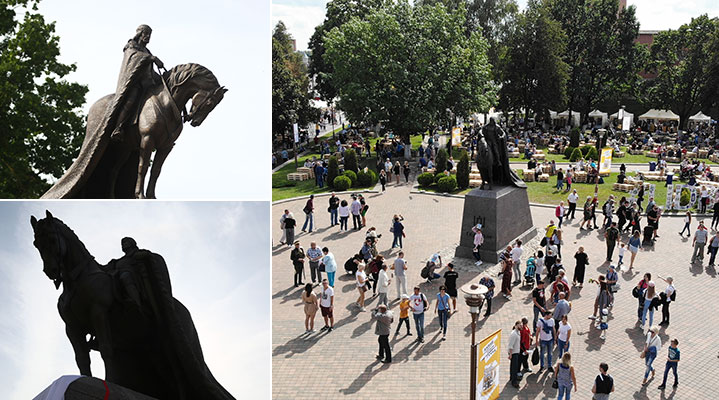 Church of the Exaltation of the Holy Cross
Church of the Exaltation of the Holy Cross
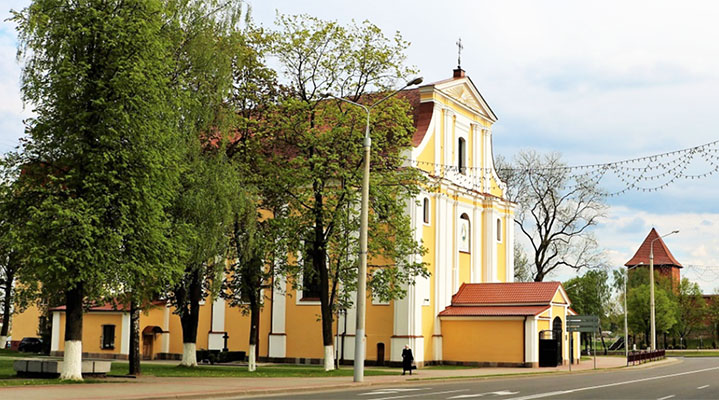 Next to the castle on Grunwald Street there is the Church of the Exaltation of the Holy Cross, the oldest church in the town. According to chronicles, the first church was built in Lida as early as 1388 by the order of King Jahajla, but shortly afterwards it was burnt down by crusaders. Rebuilt wooden churches did not stand the test of time and fire, either. Finally a stone Church of the Exaltation of the Holy Cross was erected in 1765-1770. Its architect was Johann Christoph Glaubitz, the founder of the famous Vilna Baroque style.
Next to the castle on Grunwald Street there is the Church of the Exaltation of the Holy Cross, the oldest church in the town. According to chronicles, the first church was built in Lida as early as 1388 by the order of King Jahajla, but shortly afterwards it was burnt down by crusaders. Rebuilt wooden churches did not stand the test of time and fire, either. Finally a stone Church of the Exaltation of the Holy Cross was erected in 1765-1770. Its architect was Johann Christoph Glaubitz, the founder of the famous Vilna Baroque style.
Initially, the three-aisled basilica was decorated with two symmetrical bell towers. They were destroyed by fires during wars. The brick fence around the church has not survived, either. What actually has is the frescoed vaults and walls, the interior with ornamental molding and Rococo sculptures. The holiest relic of the temple is the icon of the Mother of God with the Child. The icon was brought to Lida by the first Franciscan missionaries in the 14th century.
Francysk Skaryna and Adam Mickiewicz
Not far from the castle and the church, there is another tourist attraction. It is the monument to a legendary personality, educator, writer and printer, humanist, medical scientist Francysk Skaryna. Many monuments to this outstanding personality of Belarusian and European history have been installed in Belarus and abroad. In 1993, such a monument was erected in Lida to celebrate the second anniversary of the country’s independence. Skaryna is depicted with his hand raised, symbolizing the wisdom, knowledge and power of human thought
On Adam Mickiewicz Street there is a bust of the famous poet and politician whose life was closely connected with Belarus. Adam Mickiewicz is regarded as a national poet in Poland, Lithuania and Belarus. He was born not far from Lida, in Novogrudok District. There are open house-museums that tell the story of the poet’s life in Zaosie, his birthplace, and in Novogrudok. A street in Lida is named after the poet, with a memorable bust to the outstanding poet installed there.
St. Michael’s Cathedral
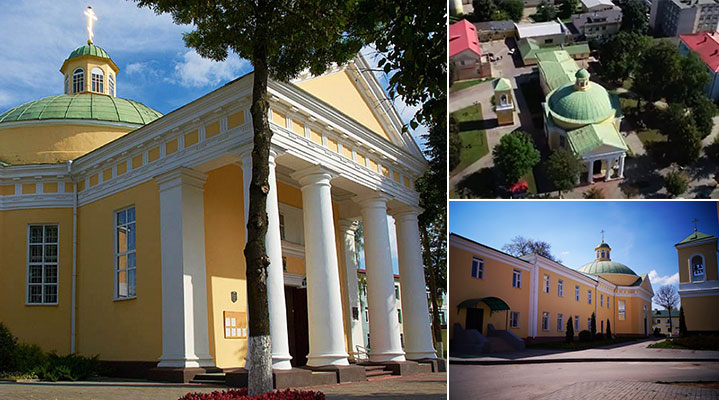 The magnificent temple in the Classicism style is a rare architectural specimen for Belarus. The religious building has the form of a one-dome rotunda with a columned portico, resembling antiquity and the Pantheon in Rome. It was a wooden church until 1818. It was dismantled during the expansion of the Catholic monastery and the construction of the church in 1825. Almost the entire town burned down, including the church, during a large fire in Lida in 1842. A brick cathedral in the form of a cross with a circle in the center was built on the site in 1863. In the 20th century, the temple lived through different times: it was closed, handed over to the Catholic church, used as a residential building, served as a museum and even as a planetarium. For several decades already, it has been the church of the Orthodox Eparchy, a protected specimen of architecture. The monastery building, closed in 1832, and the one-tier bell tower near the cathedral have also survived to the present day.
The magnificent temple in the Classicism style is a rare architectural specimen for Belarus. The religious building has the form of a one-dome rotunda with a columned portico, resembling antiquity and the Pantheon in Rome. It was a wooden church until 1818. It was dismantled during the expansion of the Catholic monastery and the construction of the church in 1825. Almost the entire town burned down, including the church, during a large fire in Lida in 1842. A brick cathedral in the form of a cross with a circle in the center was built on the site in 1863. In the 20th century, the temple lived through different times: it was closed, handed over to the Catholic church, used as a residential building, served as a museum and even as a planetarium. For several decades already, it has been the church of the Orthodox Eparchy, a protected specimen of architecture. The monastery building, closed in 1832, and the one-tier bell tower near the cathedral have also survived to the present day.
Church of Saint Pantaleon the Healer
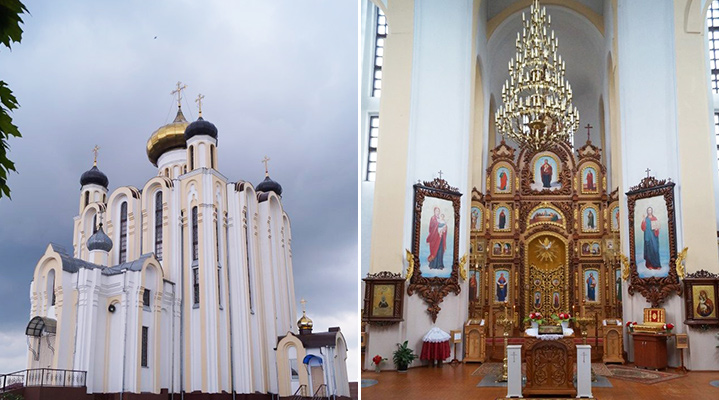 This Orthodox church was built relatively recently, in 2006, but has already become an important landmark of the town. The church named after healer and martyr Saint Pantaleon was built in the Neo-Byzantine style. The church features a carved wooden altar.
This Orthodox church was built relatively recently, in 2006, but has already become an important landmark of the town. The church named after healer and martyr Saint Pantaleon was built in the Neo-Byzantine style. The church features a carved wooden altar.
Mound of Immortality
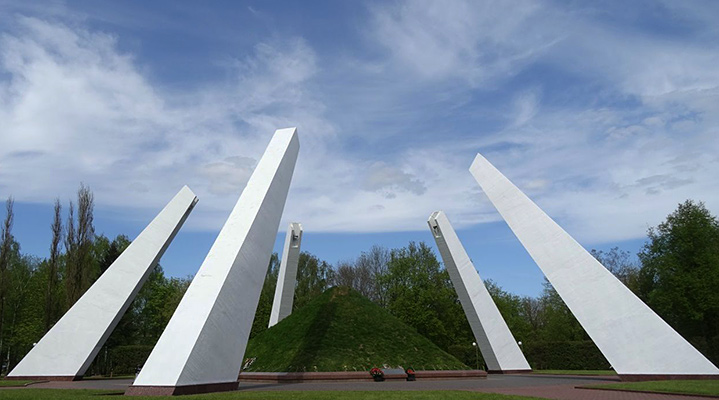 The Mound of Immortality in Lida’s central park commemorates the events and heroes of the Great Patriotic War. Since 9 May 1966, numerous delegations brought there soil from battlefields. In 1967, the Tomb of the Unknown Soldier was moved to this place. The 7m-high pentagonal pyramid, 55m at the base, was set up as a tribute to the fallen. In 1974, 14m-high pylons were added to the composition. They stand at the 76° angle and symbolize gun barrels.
The Mound of Immortality in Lida’s central park commemorates the events and heroes of the Great Patriotic War. Since 9 May 1966, numerous delegations brought there soil from battlefields. In 1967, the Tomb of the Unknown Soldier was moved to this place. The 7m-high pentagonal pyramid, 55m at the base, was set up as a tribute to the fallen. In 1974, 14m-high pylons were added to the composition. They stand at the 76° angle and symbolize gun barrels.
Lida History and Art Museum
The museum was founded in 1939. The museum was closed and reopened several times and moved into various buildings, including the old St. Michael Cathedral. Despite all challenges, it continued collecting artifacts related to local history. In 2000, the Lida Local History Museum merged with the Lida Art Gallery to form the Lida History and Art Museum. At present, its holdings boast 25 collections and more than 40,000 items. The richest collections are the archaeological collection that includes rarities found during excavations in and around the castle, the numismatic collection with the treasures from the former Carmelite monastery, and a collection of household items.
Where: 37a Pobedy Street
Lida sculptures
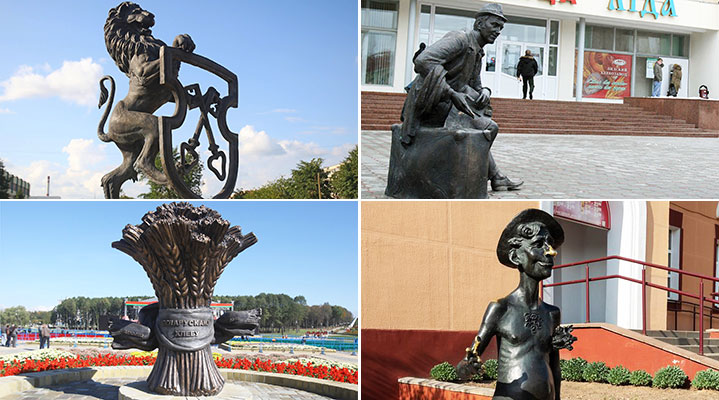 The historical coat of arms of Lida that received the Magdeburg rights in 1590 depicted a golden lion and two crossed keys. The present-day town boasts a bronze monument celebrating these symbols. In 2010 Belarusian sculptor Vladimir Zhbanov unveiled the sculpture which elements could be clearly visible from all sides.
The historical coat of arms of Lida that received the Magdeburg rights in 1590 depicted a golden lion and two crossed keys. The present-day town boasts a bronze monument celebrating these symbols. In 2010 Belarusian sculptor Vladimir Zhbanov unveiled the sculpture which elements could be clearly visible from all sides.
Vladimir Zhbanov made several other interesting sculptures for Lida. For example, Sauna-goer, known as Sauna-goer Vasya among locals, welcomes people at the entrance to the town’s largest sauna. Rubbing his nose, foot, or the fish that sticks out of the briefcase will make your visit to the sauna enjoyable and make your wish come true. The sculpture Business Traveler by the Lida Hotel invites visitors to stop in the town and get familiar with it.
In the run-up to the Dazhynki harvest festival, Lida unveiled a monument to Belarusian bread. The sculpture depicts a symbolic sheaf of wheat tied with a ribbon, which is traditionally reaped by hand on the first day of harvesting.
Lidskoe Pivo Brewery Museum
 The town of Lida is famous for being home to one of the country’s oldest breweries and boasts rich traditions of beer brewing, grain kvass and carbonated water production. An enterprising local resident Nosel Pupko built the brewery in the 1870s. The historical building still stands in the heart of the modern enterprise in Lida’s shortest street – Pivnaya Street. The date the first batch of beer was brewed – 1876 – can be seen as an inscription made of bricks on the old chimney. A one-storey building where the owners lived and old bottling shops can be found nearby. Three generations of the Pupkos owned the enterprise until the brewery was nationalized in 1939.
The town of Lida is famous for being home to one of the country’s oldest breweries and boasts rich traditions of beer brewing, grain kvass and carbonated water production. An enterprising local resident Nosel Pupko built the brewery in the 1870s. The historical building still stands in the heart of the modern enterprise in Lida’s shortest street – Pivnaya Street. The date the first batch of beer was brewed – 1876 – can be seen as an inscription made of bricks on the old chimney. A one-storey building where the owners lived and old bottling shops can be found nearby. Three generations of the Pupkos owned the enterprise until the brewery was nationalized in 1939.
Today Lidskoe Pivo is one of Belarus’ largest modern enterprises. It is part of the group of companies of the Finnish concern Olvi. The brewery can make 250-270 million liters of beer and various beverages per annum. Tourists are invited to visit the company’s museum that tells the story of the Belarusian beer brewing industry and the brewery in Lida. Visitors can be taken on a tour of the enterprise and see a rich collection of rare photos, vintage bottles, labels, and packaging, valuable relics and documents of the past.
Apart from that, the bright hop, malt, and water festival LIDBEER has become part of Lida’s image. Every year the festival gathers over 100,000 tourists from all parts of Belarus and from foreign countries. This year’s festival has been cancelled due to the unfavorable epidemic situation in Belarus and the world.
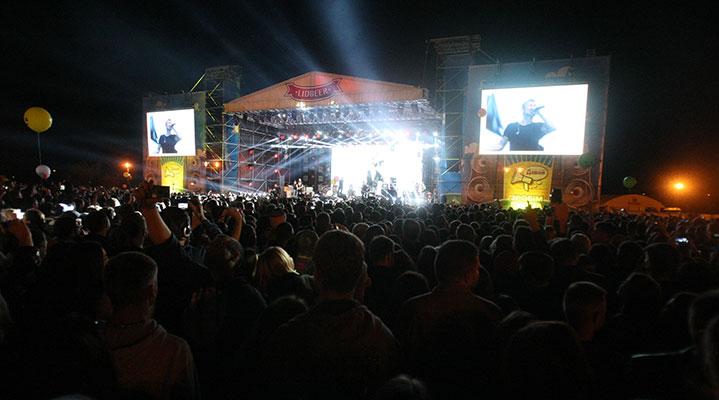
Aviation Museum
The outdoor aviation hardware museum is located in the Lida airfield far from the center of the town. It is truly a historic place because aircraft have used the local airfield for more than 100 years. It is the country’s oldest military airfield! Apart from that, one of Belarus’ oldest army units – the 116th Guards Radom Red Banner Assault Air Base – is stationed there. Its history began in Moscow Oblast in September 1941. The Air Force unit was awarded an Order of Red Banner in October 1943. The word ‘Radom’ was added to the Air Force unit’s name for providing aerial coverage to troops during the liberation of the Polish city of Radom. The pilots took part in 519 air-to-air engagements and shot down 316 enemy aircraft during the Great Patriotic War of 1941-1945.


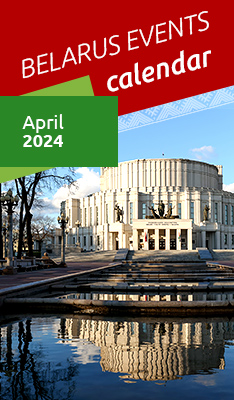




 send friend
send friend print version
print version make home page
make home page add to bookmarks
add to bookmarks
